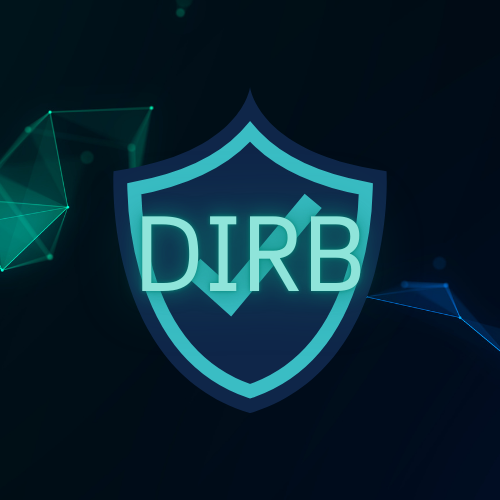Imagine discovering that a forgotten backup file was left on your server, allowing someone to gain access to your website and compromise its security. Though it seems like a nightmare, many people actually experience it. Securing your website requires more than just using a secure password in this day and age, where cyber threats evolve more quickly than ever. Your hosting environment should be as organized and safe as your digital locks. This article dives into how you can use DIRB—a powerful, often overlooked tool—to clean up your server and fortify your website against potential threats.
The Importance of a Clean Hosting Environment
This is where potential vulnerabilities can be identified and fixed with the help of technologies like DIRB. These extra files can include outdated backups, configuration files, PHPINFO files, and other sensitive data. While these files might not be immediately visible to the average user, they can easily be discovered by skilled hackers using sophisticated tools.
Even though the normal user might not be able to see these files right away, experienced hackers using advanced tools can find them with ease.
For instance, developers may mistakenly leave configuration or backup files on the server, believing them to be hidden from the public. However, cybercriminals are excellent at locating these files and then taking advantage of them to access your web server without authorization. This is where potential vulnerabilities can be identified and fixed with the help of technologies like DIRB.
Introducing DIRB: A Powerful Tool for Website Security
A command-line tool known as DIRB is utilized to detect concealed files and directories on a web server. It’s extremely handy for ethical hackers & security professionals who want to keep sensitive files secure.
Although DIRB is included by default in Kali Linux, package managers such as Yum or apt-get allow users to install it on other Linux systems.
The basic idea behind DIRB is to test your web server using a list of frequently used file and directory names via brute force. If DIRB receives a response indicating that a file or directory exists, it will list this finding, allowing you to investigate further. This process helps you identify files that might be posing a security risk.
Detailed Explanation of Web Security Risks
Recognizing the kinds of files that could cause problems will help one understand the risks posed by unnecessary files:
- Backup Files: Usually, backup files kept in directories are not intended for public access. On the other hand, poor security of these files might allow access to unauthorized users. Backup files may contain sensitive information, such as database data, user credentials, or configuration settings, which could be abused.
- Configuration Files: The functionality of your website depends critically on configuration files—containing database connection strings or application settings. If these files become publicly available, they could give hackers valuable information required to breach your server.
- PHPINFO Files: PHPINFO files offer complete information about the PHP environment & server setup. Although this data might help with debugging, it can also expose system weaknesses and configuration details that hackers can exploit.
- Password Files: Files containing passwords or other authentication details are particularly dangerous if exposed. These files can grant hackers access to various parts of your server or application, leading to serious security breaches.
How DIRB Works
DIRB operates using a brute-force attack methodology. It takes a wordlist—a list of common file and directory names—and systematically tests each one against your web server. If DIRB receives a response from the server indicating that a file or directory exists, it will list that finding for you. This helps identify files that might compromise the security of your server.
Here’s a simple example of how to use DIRB:
-
- dirb https://example.com
Running this command will make DIRB scan the specified URL and attempt to locate files and directories based on its wordlist. If DIRB finds anything, it will display the results in the terminal, giving you a list of files that might need to be reviewed and potentially removed.
Key DIRB Options for Effective Scanning
To make the most of DIRB, you can use various options to customize your scans. Here are some common ones that can be particularly useful:
-a: This option allows you to specify a user agent for the scan. By default, DIRB uses Mozilla/4.0, but you can change this to mimic different browsers or applications if needed.
-i: Use this option for a case-insensitive search. This is helpful if you suspect that files might be named with mixed cases or unconventional naming conventions.
-p: This option lets you use a proxy server for the scan. Using a proxy can be useful for hiding your IP address or testing through different network conditions.
–P: If your proxy server requires authentication, use this option to provide the necessary credentials along with your proxy settings.
-r: This option restricts the scan to the root directory only rather than recursively searching through all directories on the server. This can speed up the scan if you’re only interested in finding files at the top level.
Practical Steps for Using DIRB
- Install DIRB: If you’re using Kali Linux, DIRB has already been installed. For other distributions, install it using your package manager. For example:
→ sudo apt-get install dirb
or
→ sudo yum install dirb
- Run a Basic Scan: Use the basic command to start scanning your website:
- dirb https://yourwebsite.com
- Review the Results: Check the output for any files or directories that should not be accessible. Pay close attention to any potentially sensitive files that could be exploited.
- Take Action: Based on the results, review and remove unnecessary or sensitive files from your server. Ensure that any remaining files are appropriately secured and do not expose any vulnerabilities.
In-Depth DIRB Usage
Using DIRB effectively involves understanding and applying various options to tailor your scan to specific needs. Here are some advanced usage scenarios:
- Scanning Specific Directories: If you know that certain directories on your server might contain sensitive files, you can use DIRB to focus on those directories. For example, to scan a specific subdirectory, you can use:
- dirb https://example.com/subdirectory
- dirb https://example.com/subdirectory
- Using Custom Wordlists: DIRB comes with a default wordlist, but you can use custom wordlists to enhance the scan. If you have a list of specific file names or directories relevant to your site, you can use:
- dirb https://example.com -w /path/to/your/wordlist.txt
- dirb https://example.com -w /path/to/your/wordlist.txt
- Analyzing Results: After running DIRB, carefully analyze the results to identify files that should be removed or secured. Look for any unexpected files or directories that might pose a risk and take appropriate action to address these issues.
Best Practices for Website Security
Apart from applying DIRB and other technologies, there are additional best practices followed by web development company, that you should follow to sustain a safe web server:
- Regular Updates: Maintain updated versions of your web server software, CMS, and any plugins or themes. Frequent updates improve security and assist in patching known vulnerabilities.
- Vulnerability Scanning: Regular scanning for vulnerabilities in your website should be done using further security tools and services. Automation of vulnerability scanners, security plugins, and third-party security evaluations can all fit here.
- Secure Coding Practices: Use safe coding techniques to reduce bugs in code on your website. This covers output encoding, input validation, and avoiding common security issues such as cross-site scripting (XSS) and SQL injection.
- Access Controls: Strict access limits will help to guarantee that only authorized users can access private portions of your server. Limit rights based on user roles and apply robust authentication systems.
- Regular Backups: Although poorly handled backups themselves can create a security risk, they are essential for disaster recovery. Make sure backups are kept safely and cannot be accessed from the section of your server exposing public access.
Conclusion
Managing a website mostly depends on keeping a web server safe. One good approach to lowering the possibility of security threats is constantly identifying and deleting pointless files using tools such as DIRB. By keeping your server clean & free from sensitive or outdated files, you can effectively protect your website from unauthorized access or other security threats.
Keep in mind while tools like DIRB are priceless, they are just one part of a comprehensive security strategy. Always stay ahead on the best techniques for website security; if necessary, think about consulting with experts.
If you’re looking for professional assistance with web development or security, it might be beneficial to reach out to experts who can offer tailored solutions. In the field of web development, companies like KGN Technologies can provide comprehensive services to ensure your website remains secure and functions properly.
In conclusion, DIRB is a powerful tool that can assist in keeping track of website security by identifying and eliminating useless files. By following the steps described above, you can implement proactive measures to safeguard your server and improve the overall security of your website.








